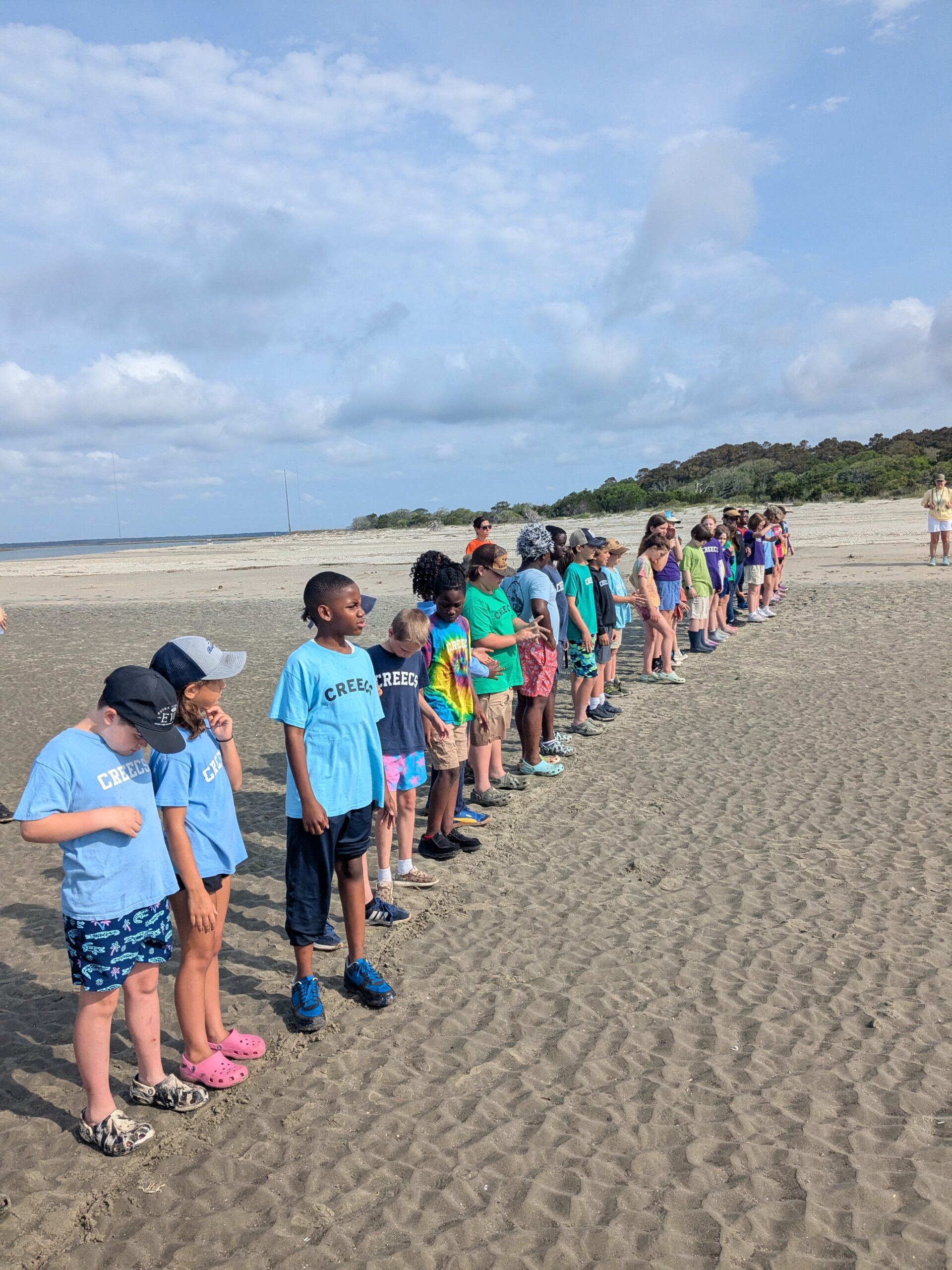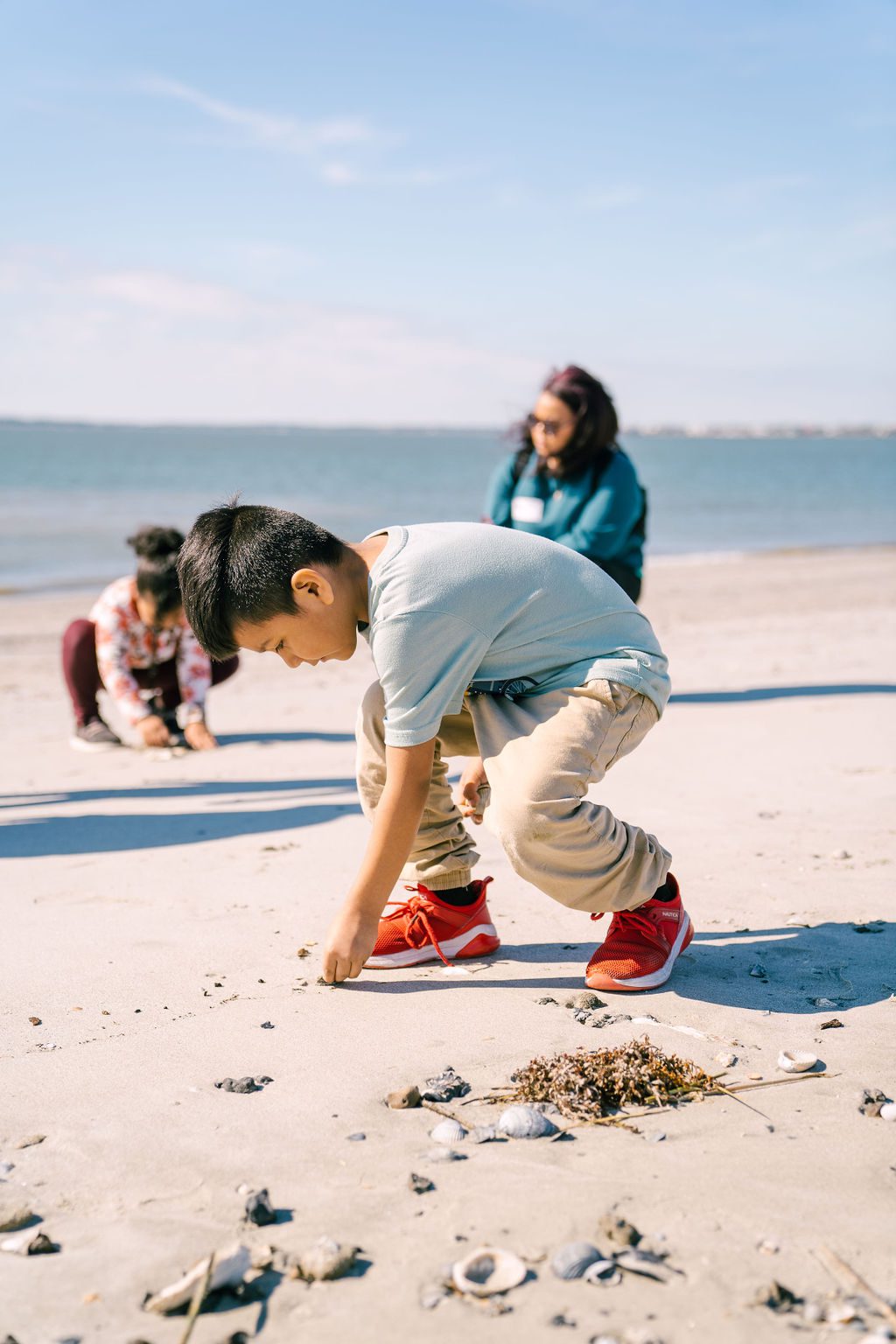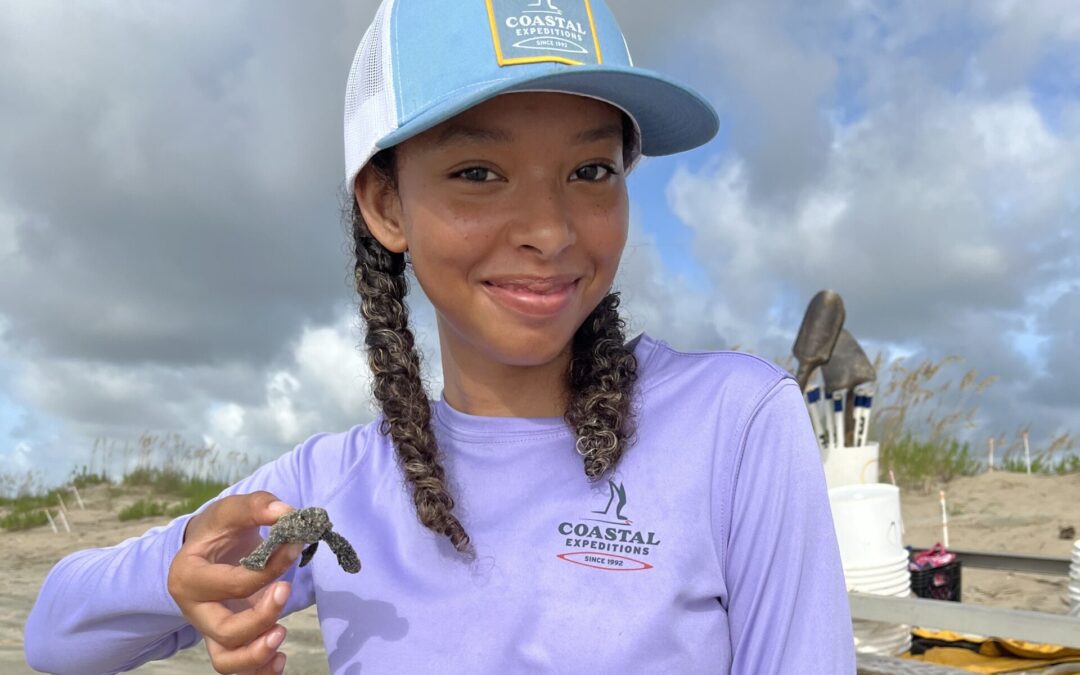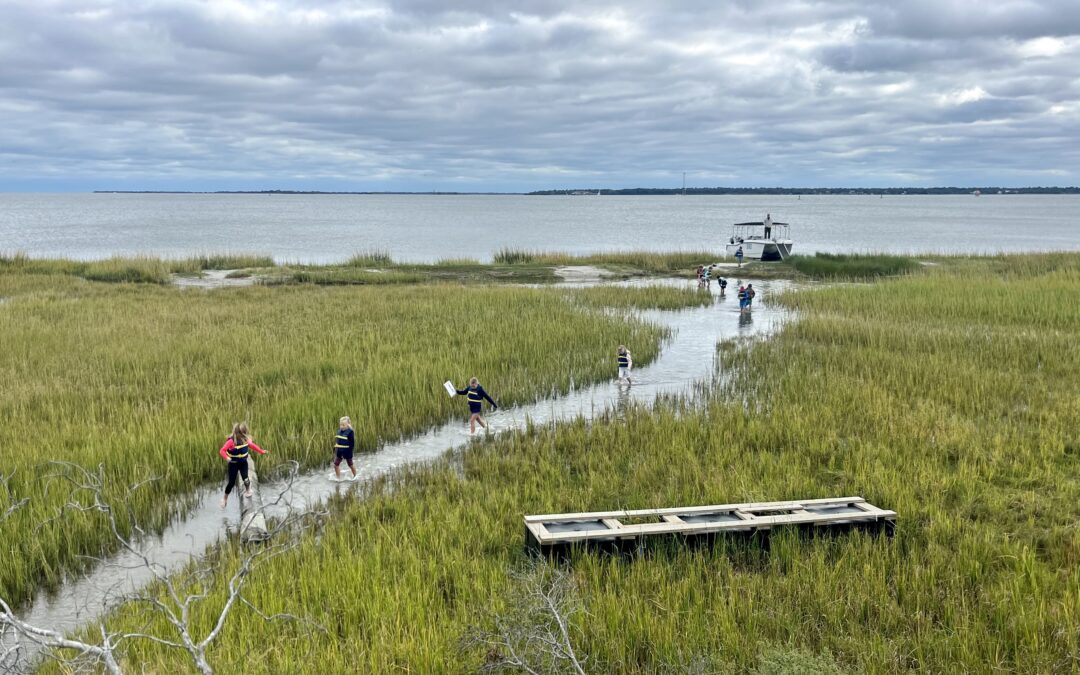GUIDEPOSTS
Giving Shorebirds a Voice:
CREECS Students Join the Mission to Protect Cape Romain’s Coastal Birds
This spring, the Coastal Expeditions Foundation Outdoor School launched a new education initiative that brought students into the heart of our conservation work—and into the wild.
In partnership with Cape Romain Environmental Education Charter School (CREECS), we worked with Head of Environmental Education Allie Kreutzer to create a five-part curriculum designed to connect students with the incredible coastal bird populations of Cape Romain National Wildlife Refuge. The goal? To build a deeper understanding of our shared habitat and empower a new generation of stewards for the birds who call it home.
A Hands-On, Feet-in-the-Sand Approach
We believe the best lessons are learned outside, where tides rise, birds flock overhead, and salt air fills your lungs. But before setting foot on the beach, students began with a foundation of classroom learning—identifying the shorebirds and seabirds found in our region, and learning how small actions (like walking below the high tide line) can make a big difference for wildlife.
That knowledge was put into action on a field trip to the south end of Bulls Island, where students observed bird behavior firsthand and played interactive games that helped them think critically about respectful recreation on the coast.
Throughout this initiative, the students turned their knowledge into action:
-
Art & Awareness: Through student-designed signs, they helped communicate the importance of nesting habitat for beachgoers and their own community.
-
Civic Engagement: They attended the McClellanville Town Council meeting to hear from South Carolina Department of Natural Resources (SCDNR) and U.S. Fish & Wildlife Service (USFWS) representatives, connecting classroom learning with real-world conservation policy.
-
Stewardship in the Field: With support from SCDNR biologist Mary Catherine and Coastal Expeditions Foundation bird steward Heidi, the students traveled to Lighthouse Island to post official signage around active nesting areas—directly helping to protect critical habitat.
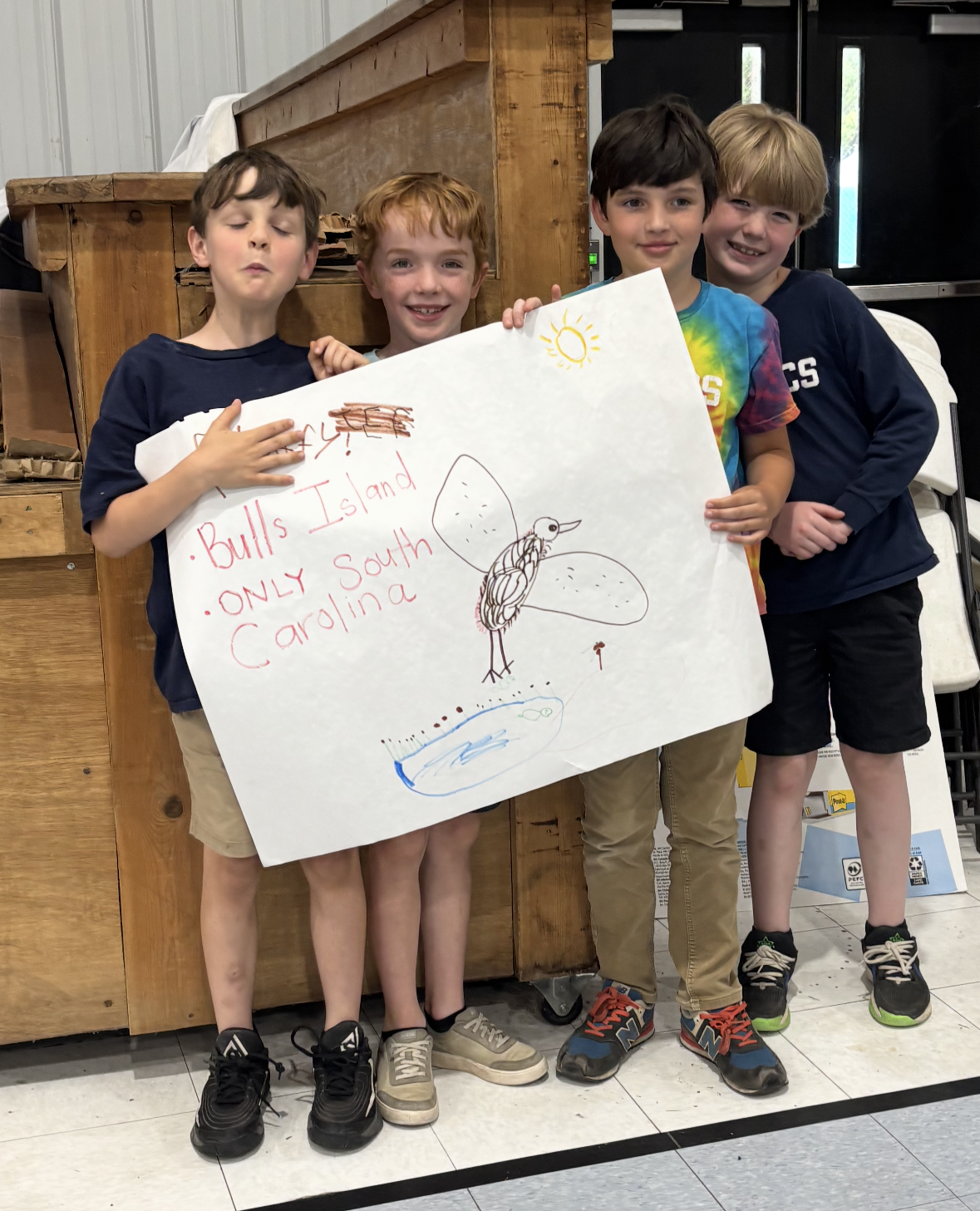
At a McClellanville Town Council meeting, students presented signs to the community to share the importance of nesting habitat for shorebirds.
“Our goal was to promote community awareness and teach students how we can better coexist with these birds as they nest, feed, and roost throughout the year.” -Katie Morrison

Students from CREECS headed out for a field trip with Coastal Expeditions educators to learn about shorebird habitat
Investing in the Future
This program reflects our belief that outdoor education is one of the most powerful tools in conservation. When students see a Plover chick skittering through the wrack line, or hear the shrill call of a Least Tern overhead, they begin to understand their role in something bigger than themselves.
This was a first-year pilot—and a successful one. We’re excited to continue this work with CREECS, deepen our ties to the McClellanville community, and expand the reach of the Outdoor School.
Together, we’re giving coastal birds more eyes, more voices, and more advocates for the future.
With Gratitude
Thank you to the Coastal Expeditions Foundation team members who helped bring this vision to life:
Annie Owen, Chris Crolley, Katie Morrison, Morgan Korecki, MC Woodrum, Colleen O’Toole, and Reagan Walker.
And to the students of CREECS: thank you for showing up with curiosity, courage, and care. You are the future of conservation.
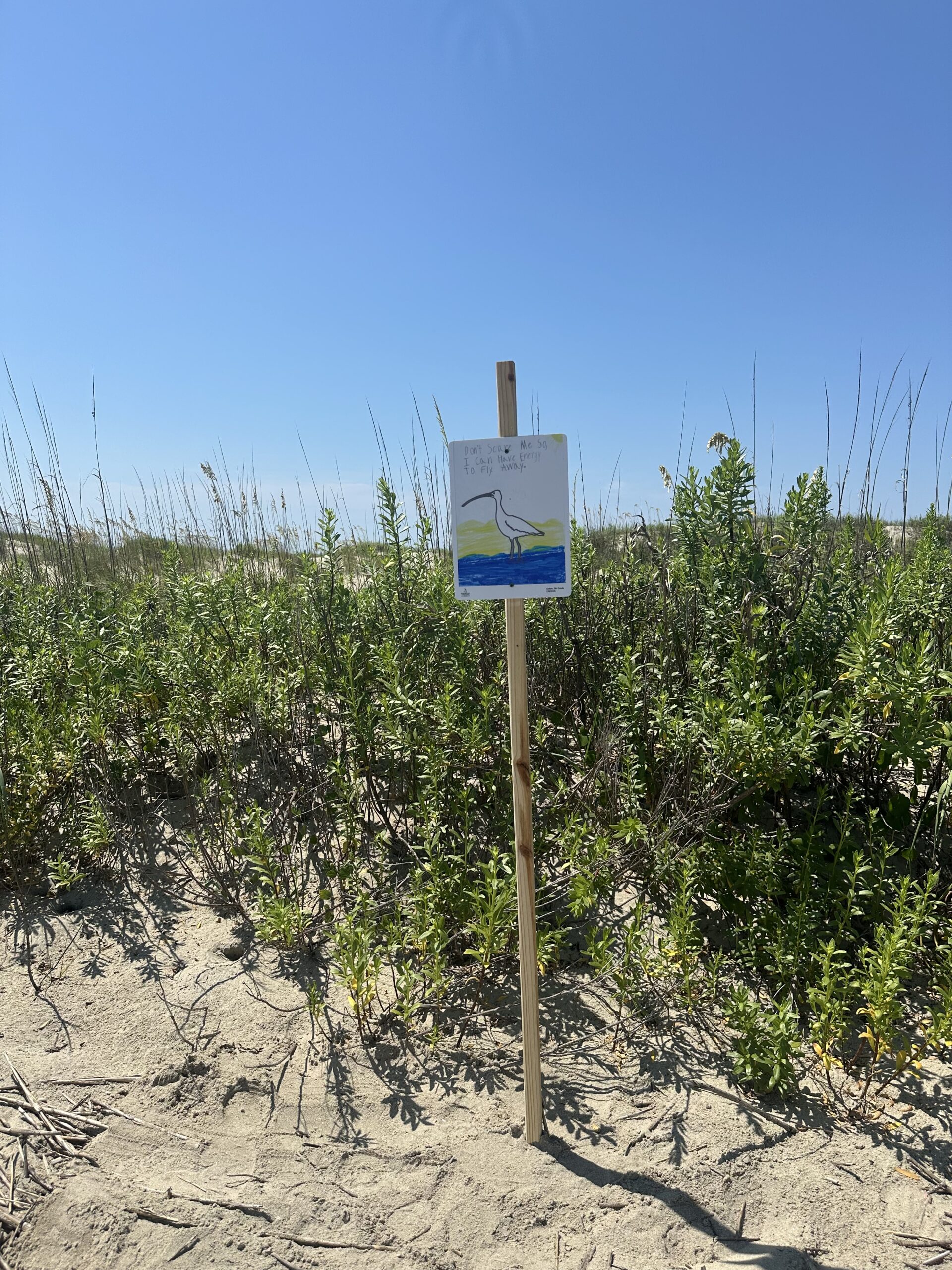
Sign made by a CREECS student posted on Lighthouse Island to remind boaters to respect the nesting areas
